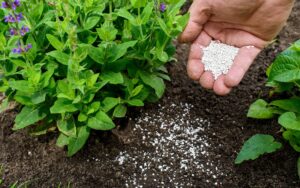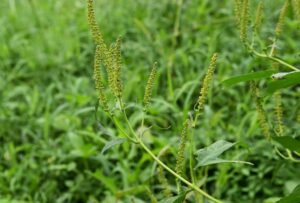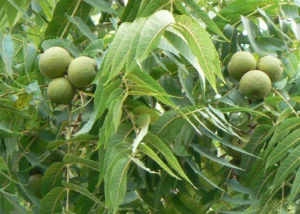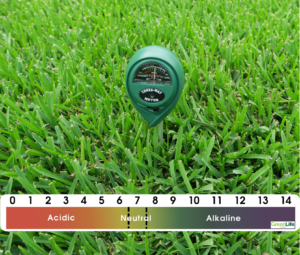Why is the Plant Population Calculator Important?
The plant population calculator helps you estimate the number of plants that can be grown in your farm field, allowing for early yield and profit predictions. You can toggle between plants per hectare or plants per acre, depending on your needs. This tool is useful for comparing early and late-season crop populations, assessing crop losses, and planning replanting strategies.
Plant Population Calculator
| Field length (m): | |
| Field width (m): | |
| Field area (hectare): | |
| Plant spacing (cm): | |
| Row spacing (cm): | |
| Walkway width (cm): | |
| Number of plants per stand: | |
| Plant population: | |
| Plant population per hectare: |
Understanding Plant Population Density
Plant population refers to the number of plants growing within a specific area of land. For farmers aiming to maximize their crop yield and maintain healthy plants, determining the optimal plant population is crucial. This is especially important when planning the layout of the field, whether for transplanting seedlings or sowing seeds directly, as careful planning helps prevent wasted seeds and higher planting costs.
Maintaining an ideal plant population also prevents overcrowding, which can cause plants to compete for essential resources like water, nutrients, and space. Conversely, low plant density creates room for weeds to thrive, disrupting crop growth and reducing yield potential.
To avoid these issues, farmers need to calculate plant population accurately. The plant population calculator offers a quick and efficient way to determine the right number of plants per unit area, ensuring:
- Optimal plant population for healthy growth and maximum yield.
- Correct plant spacing for effective use of available resources.
- An estimate of fertilizer, manure, and mulch requirements (you can use tools like a fertilizer or mulch calculator for this).
- Proper planning for labor and cultivation needs.
- Appropriate water usage and irrigation methods.
- Profit projections with a clear margin of safety based on expected crop yield.
By using the plant population calculator, farmers can fine-tune their planting strategies to achieve better results with less waste and more efficient use of resources.
Calculating Plant Population per Acre: A Simple Guide
Accurately calculating the number of plants per acre is essential for optimizing crop yield and ensuring efficient use of land. The formula for determining plant population is straightforward, yet important for field cultivation planning. To calculate the plant population, use the following equation:
Plant population = (field area × number of plants per stand) / ((plant spacing + walkway width) × row spacing)
Make sure to maintain consistent units across all variables when performing the plant population density calculation to ensure accurate results.
Calculating Plant Population Per Acre: A Step-by-Step Guide
Calculating plant population per acre is essential for maximizing yield and ensuring optimal use of resources in agriculture. This calculation allows farmers to plan how many plants are grown in a given area, manage resources like water, fertilizer, and labor, and avoid overcrowding, which can lead to competition for nutrients. Below is a detailed guide on how to calculate plant population per acre and an example to clarify the process.
Formula for Calculating Plant Population Per Acre
The basic formula to calculate plant population per acre is as follows:
$$[\text{Plant Population per Acre} = \frac{43,560}{(\text{Row Spacing in feet} \times \text{Plant Spacing in feet})}]$$
Where:
- 43,560 is the number of square feet in one acre.
- Row spacing is the distance between rows.
- Plant spacing is the distance between individual plants within a row.
Step-by-Step Process:
- Measure Row and Plant Spacing: First, determine how far apart the rows are and how much distance is between the plants within each row. This spacing can vary depending on the type of crop being grown.
- Plug the Values into the Formula: Use the formula to calculate how many plants you can grow per acre. For row crops like corn or soybeans, where the spacing is typically uniform, this is straightforward.
Example:
Let’s say you are planting corn, and your row spacing is 30 inches (2.5 feet), and plant spacing is 8 inches (0.67 feet).
Using the formula:
$$[\text{Plant Population per Acre} = \frac{43,560}{(2.5 \times 0.67)}]$$
$$[= \frac{43,560}{1.675} \approx 25,992 \text{ plants per acre}]$$
This means you can plant approximately 25,992 corn plants in an acre.
Considerations:
- Crop Type: Different crops require different spacing. Corn and soybeans are planted with more space between plants than crops like lettuce or carrots.
- Field Shape: If your field isn’t a perfect rectangle, you may need to calculate the area more precisely using geometric formulas or mapping tools.
- Walkways: In larger fields, walkways may reduce the planting area. If walkways are needed, adjust your spacing calculations accordingly.
Benefits of Accurate Plant Population Calculation:
- Yield Optimization: Overcrowding can lead to plants competing for sunlight, water, and nutrients, reducing yield. Accurate calculation ensures each plant has sufficient space to thrive.
- Efficient Resource Use: By knowing your plant population, you can estimate the correct amounts of water, fertilizer, and pesticide needed.
- Cost Control: Proper spacing and population estimation reduce waste, allowing for more efficient use of seeds and labor.
Accurately calculating plant population per acre is a simple yet effective way to enhance agricultural efficiency and productivity.
How to Calculate Plant Population per Acre?
If you need to calculate the plant population per acre, simply divide the total plant population by the field area measured in acres. The formula is as follows:
Plant population per acre = total plant population / field area in acres
For a simpler solution, the plant population calculator will handle this calculation for you. Just input the relevant values, and you’ll get an accurate result without needing to manually perform the calculations.
Using the Plant Population Calculator
The plant population calculator serves as both a plant per acre calculator and a plant per hectare calculator. It’s an intuitive tool that requires minimal input for quick results. Here’s how to use it:
- Determine your farm field area:
- For irregularly shaped fields, measure the length of the longest side and the average width by taking measurements from 5 different sections.
- For square or rectangular fields, input the length and width.
- Input plant spacing: Specify the distance between individual plants.
- Decide on walkway width: If necessary, input the desired width for walking paths between rows.
- Enter row spacing: Provide the spacing between rows.
- Input the number of plants per stand: This allows the calculator to compute the total plant population for your field.
- Estimate seed weight: If needed, access additional settings to calculate the weight of seeds you’ll need based on your plant population.
Buying Plant Seeds
Plant seeds are typically sold by weight in sealed containers. While some packaging may specify the number of seeds, it’s more common to see the weight listed. It’s important to estimate the correct amount of seeds you need, based on the calculated plant population, to avoid purchasing excess seed.
You should also account for possible germination failure. Crop losses are similar to animal mortality in livestock farming. To ensure you achieve your desired yield, it’s wise to plant 10–20% more than the calculated plant population.
In the plant population calculator’s additional settings, you can account for these potential losses by inputting your projected percentage of crop failure. This will give you a new target plant population.
Next, calculate the amount of seed you’ll need based on the weight and number of seeds per kilogram or pound:
Estimated seed weight = (number of seeds per kg/lb × field area) + 20% (to account for crop losses)
By providing all the relevant details in the plant population calculator, you’ll get an accurate estimate of how much seed to buy, ensuring you only purchase what’s necessary for your specific plant population.
Number of seeds per kilogram for various crops:
| Crop | Seeds per kilogram (kg) |
|---|---|
| Beans | 3,000 |
| Beetroot | 48,000 |
| Broccoli | 350,000 |
| Brussels Sprouts | 350,000 |
| Cabbage | 350,000 |
| Cauliflower | 200,000 |
| Carrot | 400,000-1,200,000 |
| Chilli | 200,000 |
| Corn | 8,000 |
| Corn Salad | 800,000 |
| Cowpea | 4,000 |
| Cucumber | 40,000 |
| Eggplant | 250,000 |
| Groundnut | 1,500 |
| Kale | 68,000 |
| Lettuce | 1,200,000 |
| Maize | 2,500 |
| Mustard | 125,000 |
| Okra | 3,500 |
| Onion | 400,000 |
| Parsley | 600,000 |
| Parsnip | 146,000 |
| Pea | 900 |
| Pumpkin | 10,000 |
| Radish | 140,000 |
| Rhubarb | 60,000 |
| Rosemary | 900,000 |
| Sorghum | 40,000 |
| Spinach | 30,000 |
| Squash | 15,000 |
| Sunflower | 1,500 |
| Thyme | 250,000 |
| Tomato | 250,000-380,000 |
| Tomato Cherry | 86,000 |
| Turnip | 100,000 |
| Watermelon | 20,000 |
This list includes a variety of crops with their corresponding seeds per kilogram, helping with calculations when determining the amount of seeds needed for planting.






